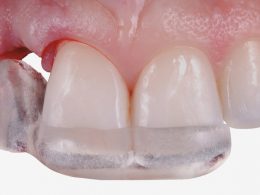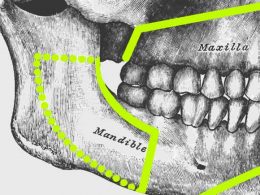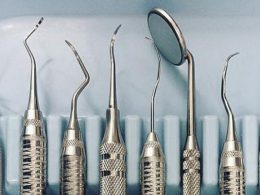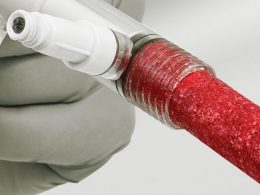Table of Contents
Oral cancer includes cancers of the mouth and throat. These neoplasms can appear on the tongue, palate, gums, oral epithelium, floor of the mouth, larynx, pharynx, and salivary glands.
They represent approximately 3% of all new cancers diagnosed each year in the United States of America, that is, about 53,000 cases.
Oral cancer occurs most often in people over the age of 40 and affects more than twice as many men as women. Most cases of oral cancer are related to tobacco use, alcoholic beverages (or both), or infection with the human papillomavirus (HPV).
The intention of this post is to warn of the importance of prevention and early diagnosis to deal with oral cancer, so we want to highlight the relevance and need for periodic oral examinations, and above all; the importance of going to the Doctor or Dentist in an emergency in case of detecting suspicious oral lesions or those that do not disappear in a reasonable time.
In general, the initial lesions or manifestations of this terrible disease are usually painless and innocuous in appearance, which is why the medical visit for evaluation is often delayed; allowing your prognosis to worsen. As advice, we must always act if after two or three weeks, the injury does not disappear. The overall survival of oral cancer at 5 years is 50%, but if it is treated in its initial stages it increases to 80%.
Signs and Symptoms of Oral Cancer
The most common signs and symptoms of oral cancer include:
- Swelling or thickening, lumps or bumps, rough spots, scabs or areas of erosion on the lips, gums or other areas of the oral cavity.
- The appearance in the mouth of velvety-looking patches or plaques that are white, red, or mottled (white and red).
- Oral bleeding for no apparent reason.
- Numbness, loss of sensitivity, or pain in any part of the face, mouth, or neck.
- Sores on the face, neck, or mouth that bleed easily and do not heal spontaneously within 2 weeks.
- Pain or a feeling that something is stuck in the back of the throat.
- Difficulty for chewing, swallowing, speaking, or moving the tongue and jaw.
- Sore throat, chronic hoarseness, and sudden voice changes.
- Earache.
- Loss of weight and body mass.
- Sudden changes in bite or fit of dentures.
If you notice any of these signs or symptoms, contact your Dentist or family Doctor for an immediate screening.
Precancerous Lesions of the Oral Mucosa
Leukoplakia and erythroplasia are the two pre-cancerous lesions par excellence of the oral mucosa, generally accepted by most authors. These lesions can also be called preneoplastic lesions or initial precursor lesions. Currently, other entities are included, such as actinic cheilitis, lupus erythematosus, and lichen planus.
It is important to detect, study and treat them; since their evolution often leads to oral cancer.
A leukoplakia is a white patch or plaque that cannot be characterized clinically or histopathologically like any other disease. Erythroplakia is defined by referring to lesions of the oral mucosa that appear as red, velvety plaques, with irregular but well-defined borders; and that they cannot be characterized clinically or histopathologically like any other disease.
Causes and Etiology
According to the American Cancer Society (ACS), men face twice the risk of developing oral cancer as women, and men over the age of 50 face the highest risk. It is estimated that more than 50,000 people in the US were diagnosed with oral cancer in the past year.
Risk factors for the development of oral cancer include:
- Smoking Habit Cigarette, cigar, or pipe smokers are six times more likely than non-smokers to develop oral cancer.
- Tobacco Derivatives Consumers of tobacco products such as chewing tobacco, oral tobacco, spit tobacco, and snuff; are 50 times more likely to develop cancer of the cheeks, gums, and mucous lining of the lips.
- Excessive Consumption of Alcohol Oral cancers are about six times more common in drinkers than in nondrinkers.
- Family History and Heredity Cancer is caused in some cases by a mutant gene that is transmitted between family members according to different patterns of inheritance. Although this is often referred to as hereditary cancer, it is not the cancer itself that is inherited, but the abnormal gene that can cause the disease; that is, the susceptibility to the disease.
- Excessive Sun Exposure Especially at a young age. Exposure to the sun causes most of the wrinkles and blemishes that later appear on our face over the years, and that can have much more serious consequences, including skin and lip cancer. Be careful during your youth, as 80% of cases of excessive sun exposure occur before 18 years old.
- Human Papillomavirus (HPV) Certain strains of HPV are considered etiological risk factors for squamous cell carcinoma of the oropharynx.
It is important to note that more than 25% of all oral cancers occur in people who do not smoke, and who only drink alcohol occasionally.
Oral Cancer Prognosis
The overall 5-year survival rate for patients with an early diagnosis of oral cavity or pharyngeal cancers is 84%. If the cancer has spread to nearby tissues, organs, or lymph nodes; the 5-year survival rate is reduced to between 50% and 65%.
How Is the Diagnosis Made?
As part of your routine dental exam, your Dentist will perform an oral cancer screening exam. Specifically, he will palpate your soft tissues for lumps or irregular changes in your neck, head, face, and oral cavity. When examining your mouth, the professional will also look for the presence of sores or tissues with changes in their normal color.
A biopsy may be needed to determine the histology of a suspicious-looking area. Oral biopsy is a surgical procedure aimed at obtaining tissue from a living organism for microscopic study, basically for diagnostic purposes. There are different types of biopsies, and only your Specialist will be able to determine which is the most appropriate for your particular case.
Incisional Biopsy
Incisional biopsy is indicated in extensive (greater than 2 cm) or multiple lesions. It consists of taking a portion of the suspicious tissue, using a cold or conventional scalpel (the most recommended). The incision should include healthy tissue together with the altered one, allowing the histopathologist to adequately compare the characteristics of one and the other.
Excisional Biopsy
It is indicated in small lesions, generally less than 2 cm in diameter. With it, two objectives are met: one diagnostic and the other therapeutic, by completely eliminating the lesion. It is also usually done using a cold or conventional scalpel, the most recommended of all. A safety margin of a few millimeters should be taken, including normal-appearing tissue, taking into account that the lesion is three-dimensional.
Biopsy by Puncture or Aspiration
It is used in particular for the diagnosis of tumor lesions of the major salivary glands and more specifically for parotid masses, as well as to analyze the content of intraosseous cystic lesions, or adenopathies. It is carried out by means of a needle supported by a syringe, to which a device that exerts great negative pressure with one hand can be adapted.
Histopathological Study
Histopathology is a branch of pathology that addresses the diagnosis of diseases through the analysis of tissues obtained by biopsy, integrating both their macroscopic and microscopic characteristics. It plays a leading role in oral diagnosis, since the analysis of cell morphology allows to determine with greater precision the pathological alteration that affects the tissue and, therefore, to reach an accurate diagnosis.
The histopathological study is carried out by a Pathologist and it is the one that ultimately allows, confirms or rules out, the presence of oral cancer.
How Is Oral Cancer Treated?
Oral cancer is treated in the same way that many other malignant tumors or neoplasms are treated; with surgery to remove the cancerous growth, followed by radiation therapy and/or chemotherapy (radiation and/or drugs treatments) to kill the remaining cancer cells.
What Can I Do to Reduce the Risk of This Disease?
Without a doubt, adopt preventive measures! By regulating certain details of your lifestyle, you can significantly reduce your risk of developing oral cancer:
1- Avoid Tobacco
The longer and more often you have used tobacco, the higher your risk of head and neck cancer. Both smoking and tobacco products for oral consumption always play a direct role in the etiology of these cancers.
Chewing tobacco and snuff, placed directly into the mouth, can create grayish-white ulcers called leukoplakia, which can become malignant and cancerous.
Tobacco and cigarettes are nothing more than a huge accumulation of cytotoxic agents that can cause cell mutations and cancer at any time, and not only in the mouth, but in any part of the body.
2- Drink Alcohol in Moderation
As with smoking, the longer and more alcohol you have consumed in your life, the more your risk of cancer increases. When you drink alcohol, your body converts it into a chemical called acetaldehyde. Acetaldehyde damages DNA and can cause a cell to start growing out of control, forming a malignant tumor.
People who consume more than 3 or 4 alcoholic beverages a day increase their risk of oral cavity cancer two to three times, according to the vast majority of research. You should definitely avoid drinking to excess. Dependence and excessive consumption of alcohol greatly increase a person’s risk.
Excessive alcohol consumption and smoking combined exert an enhancing and multiplying effect.
3- Visit Your Dentist Regularly
Doctors rarely examine the oral cavity during any type of medical evaluation. Therefore, Dentists are the first to detect potentially dangerous growths in this area of the body.
They usually perceive things very early during routine dental exams. Then, they usually refer the patient to an ear, nose, and throat Specialist, an Oncologist, or a head and neck Surgeon. If the diagnosis is confirmed and treatment is started immediately, it is very likely that the cancer can be cured, or at least, an extraordinary survival can be achieved.
In addition to visiting the Dentist every six months, be sure to brush and floss at least twice a day, to always keep your teeth and mucous membranes healthy, and thus prevent them from being too susceptible to trauma and chemical irritants.
4- Get Vaccinated Against HPV
The human papillomavirus (HPV), particularly HPV-16, is strongly associated with cancers of the oropharynx, in the back of the mouth.
HPV-related cancers are usually found in men between the ages of 40 and 50. They usually generate very mild symptoms, such as a small but permanent inflammation at the neck level, which does not disappear and is often detected when shaving.
The best way to prevent HPV is to get vaccinated before becoming sexually active. With the vaccines available, which protect against two strains of HPV, there is hope that the number of cases of these cancers will decrease over time, as more and more people become immunized.
Also, and because anyone can get HPV from a single sexual encounter, we recommend practicing safe and responsible sex.
5- Protect Your Lips From the Sun
Lip cancer is directly related to ultraviolet radiation in sunlight, and people who work outdoors or experience prolonged exposure to the sun, are more likely to develop lip cancer.
If you have a history of severe sunburn, take special care of your lips. Just as the skin can easily burn, the lips are also very sensitive to the sun.
In addition to limiting sun exposure during peak hours, from 10 am to 2 pm, always use a lip balm with a sun protection factor (SPF) when outdoors; and reapply after eating or drinking, or every time you use sunscreen if you are at the beach. Also, in harsh environments, always wear hats that protect your face from the sun.
“The Rapid Detection of a Lesion or Malignant Tumor, Is of Vital Importance to Achieve Its Cure, or at Least, to Extend the Patient’s Survival to the Maximum”.
DENTAL TIP
The Smile of Your Dreams Awaits You in Venezuela!
A cost saving alternative to your local dental care.
DENTAL VIP offers dental services in Caracas to patients from North America, Europe and the Caribbean.
We designed all our services to meet the special needs and expectations of our guests travelling for treatment:
- 50-70% lower prices.
- Volume discounts.
- Free consultation (X-ray, dental quote and transport).
- Extended guarantee packages for all treatments.
- Shorter treatment times and no waiting list.
- Free all time patient support.
- Travel and hotel assistance.
- After-care services.
We wish to ensure that your visit not only saves you money but you receive the best care for your dental needs. DENTAL VIP is dedicated to provide value for your money in your dental treatment, travel, and stay in Caracas.
Do not compromise on quality for the price, visit us in Caracas for your treatment and allow yourself the best. Do not settle for awkward removable dentures, low-end dental implants, or only temporary solutions.
Do not waste any more time, contact us right now!












